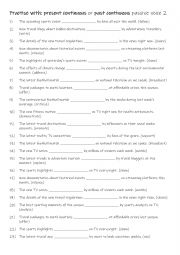
|
A2+-B1 Practise with: present continuous or past continuous passive voice 2
Learning the future continuous and future perfect tenses is really essential for expressing specific future actions and time relationships. The future continuous (e.g., I will be working at 3 PM tomorrow) describes actions that will be in progress at a particular moment in the future, which is useful for planning or predicting ongoing events. The f...
Level: intermediate
Age: 9-100
Type:
Downloads: 104
|
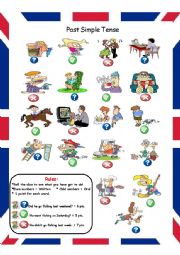
|
Past Simple Tense
An enjoyable speaking and writing supplement to reinforce asking questions, answering using both affirmative and negative sentences. To get a mixture of both oral and written work I normally have something small enough to hide in my hand. If the object is in the hand not selected, they have to write the sentence. To encourage students, I usually gi...
Level: elementary
Age: 9-100
Type: worksheet
Downloads: 217
|
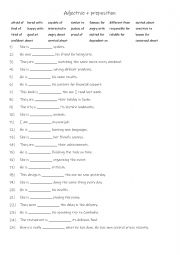
|
A2+-B1 25 Adjective + prepositions
Understanding how adjectives combine with prepositions helps students provide more detailed and precise descriptions. For example, knowing the phrase �interested in� allows you to convey specific interests more clearly.Mastering these combinations contributes to overall language proficiency, allowing you to use English more accurately and confident...
Level: intermediate
Age: 10-100
Type:
Downloads: 117
|
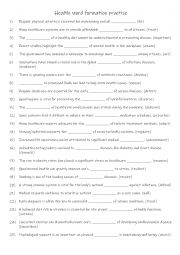
|
B1-B2 Health word formation practise
Understanding word formation allows students to expand their vocabulary, enabling them to express themselves more precisely and creatively. Knowing how to manipulate words helps them create varied sentence structures, making their writing more engaging and dynamic. Mastering word formation is key to achieving higher levels of language proficiency, ...
Level: intermediate
Age: 9-100
Type:
Downloads: 116
|
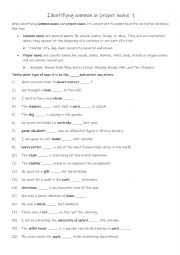
|
Identifying common or proper nouns 1
First, students need to familiarise themselves with the 2 types of nouns. Then they read the sentences to identify and use the correct punctuation for all of the sentences. Answers on page 2
Level: elementary
Age: 9-100
Type:
Downloads: 111
|
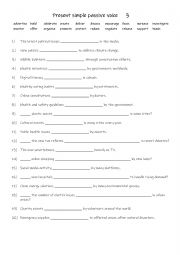
|
A2-B1 Present simple passive voice 3
Learning the present simple passive voice helps students focus on the action or the recipient, rather than the doer. It�s useful when the doer is unknown, unimportant, or to emphasize the object. Mastering this structure improves clarity, variety in sentence construction, and is essential for formal or academic communication. Students complete the ...
Level: elementary
Age: 9-100
Type:
Downloads: 104
|
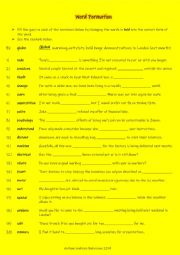
|
Word Formation Activity (1) for students studying IELTS Band 4.5 - 5 or FCE
I designed this worksheet for lower level IELTS and FCE students as a way to practise and to improve their written work by using the correct form of the word. Students need to transform the words in bold at the start of each sentence into either a Noun, Verb, Adjective,Adverb or Prefix to complete the sentences. An answer key is included.
Level: intermediate
Age: 14-100
Type: worksheet
Downloads: 337
|
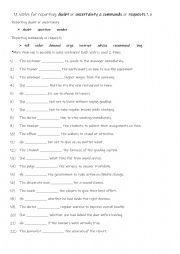
|
11 verbs for reporting doubt or uncertainty & commands or requests 1a
First, students need to familiarise themselves with the 11 verbs and check their meaning. Then they read the sentences to see which one is needed to complete the sentence. Each word is used 2 times! Answers on page 2.
Level: elementary
Age: 9-100
Type:
Downloads: 113
|
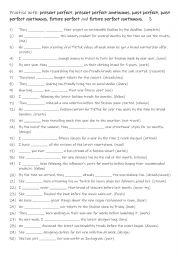
|
B1+-C1 Practise with present perfect, present perfect continuous, past perfect, past perfect continuous, future perfect and future perfect continuous. 3
First, students need to familiarise themselves with the 6 tenses and their meanings. Then they read the sentences to see which one is needed to complete the sentence using the given infinitive in (). Each tense is used 5 times! Answers on page 2
Level: intermediate
Age: 12-100
Type:
Downloads: 101
|
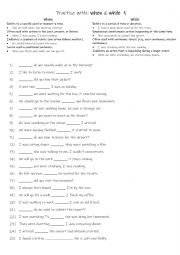
|
A2-B1 Practise with when & while 1
Students should learn when and while as they are essential for describing time relationships and creating complex sentences. When is used to pinpoint specific moments or sequences of events, such as "I heard a noise when I opened the door." While is used to describe actions happening at the same time, such as "She was singing while he was playing t...
Level: elementary
Age: 9-100
Type:
Downloads: 121
|












